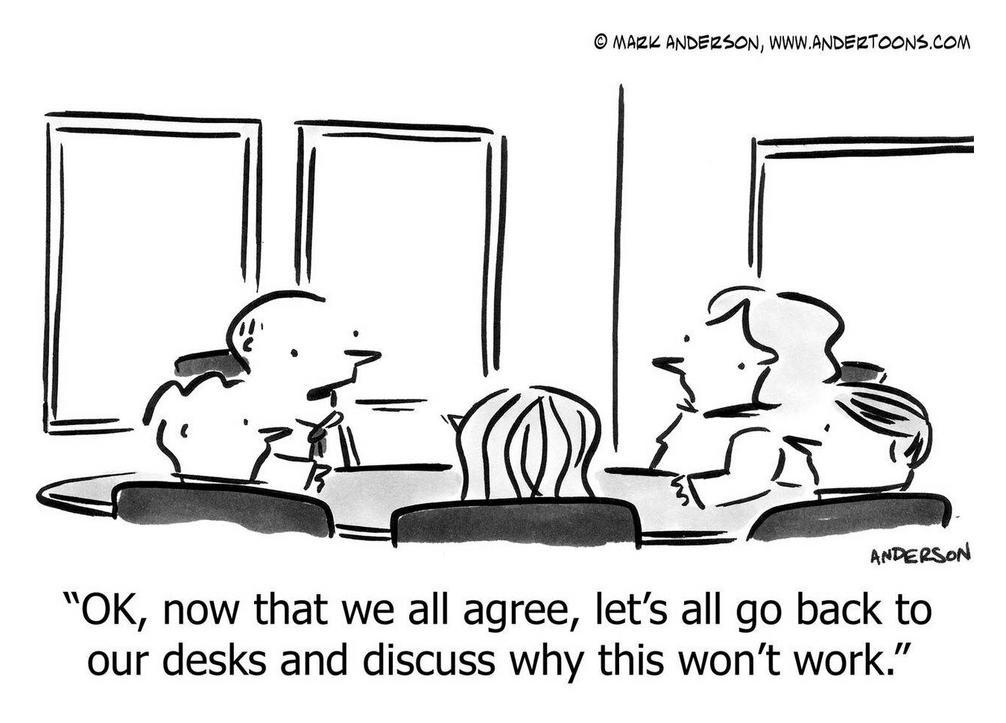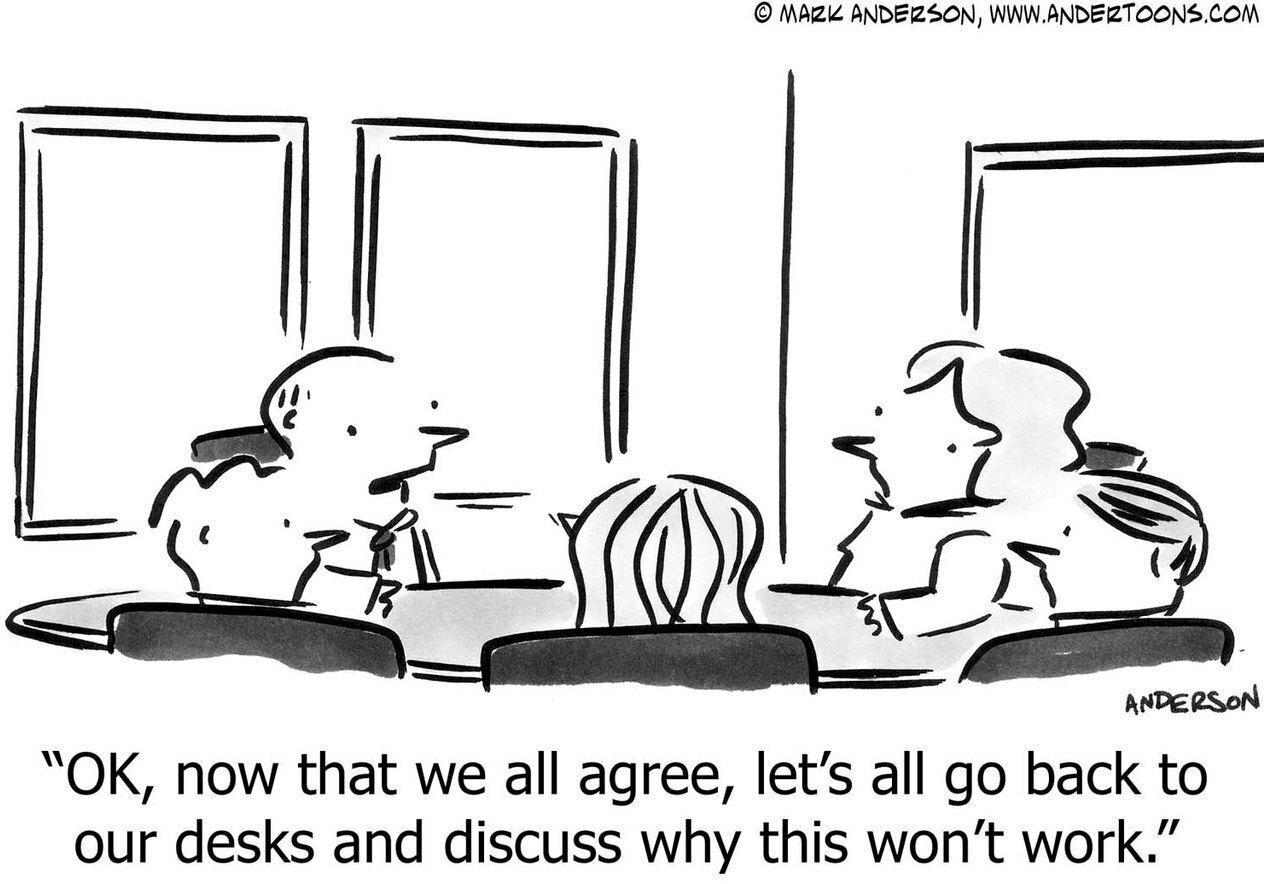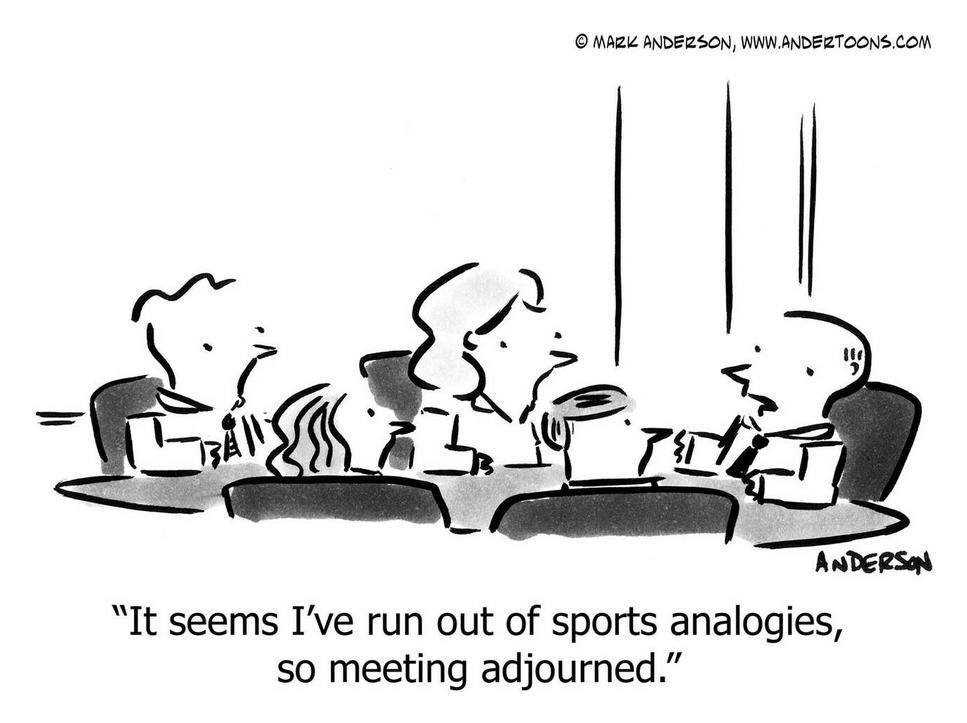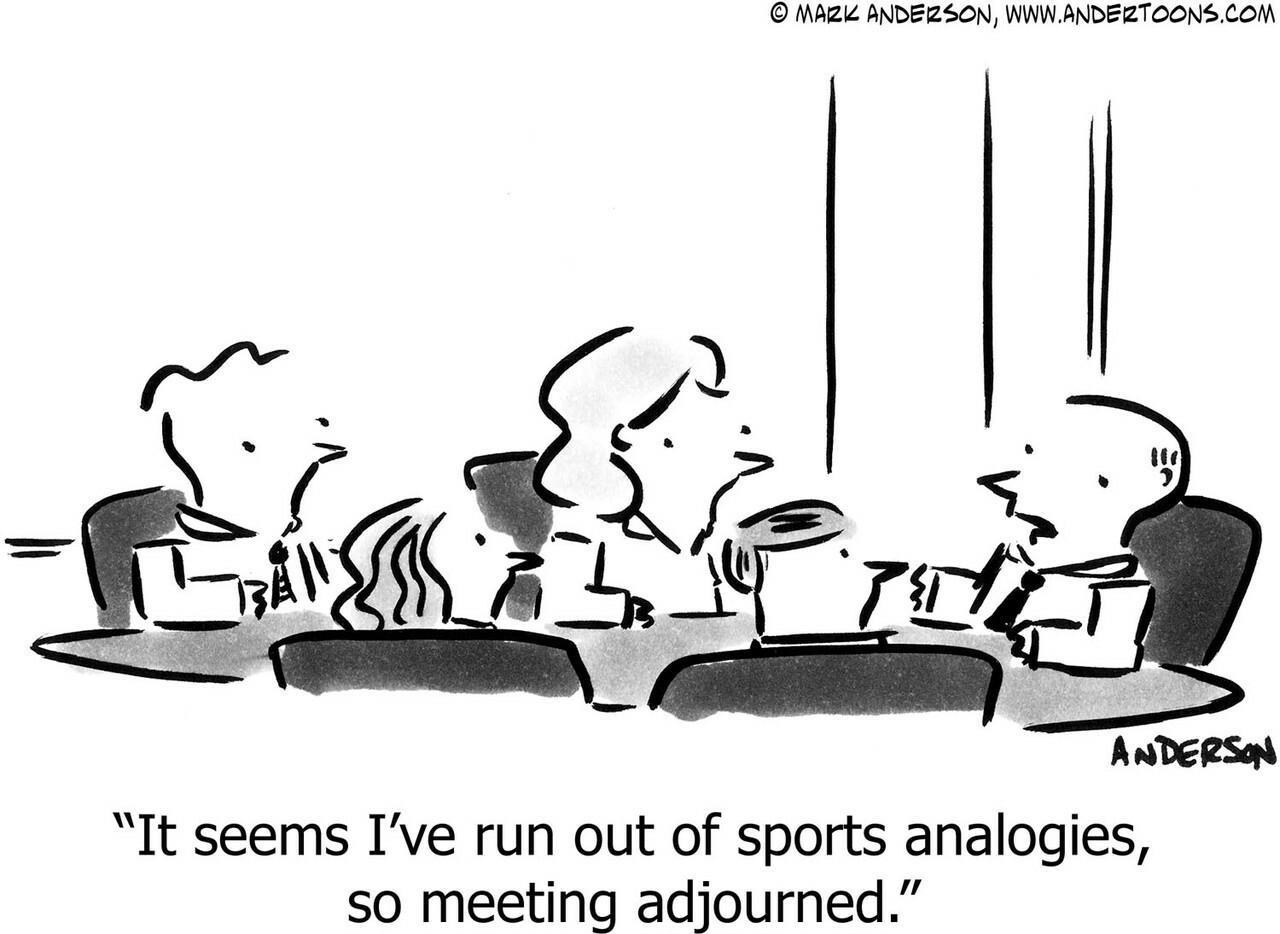Productive meeting activities: Leverage the team, empower the individual
We all hate the meeting where we prove once again that a committee is a beast with twenty legs and no brain, or when we could’ve just read the materials quietly to ourselves at a more convenient time (and maybe we did, and it’s being read to us again), but there’s also the elation of esprit de corps and accomplishment following a productive meeting, where in actual fact “all of us were smarter than any of us.”
Even when an enlightening discussion ensues, sometimes the person who requested the discussion gets foiled. A person wants to solicit ideas, but ends up getting told which idea is best. A person wants help deciding between two vetted options, but instead receives seven new options.
How can we leverage the wisdom of the crowd, while ensuring that decisions and other responsibilities continue to reside with an individual?
Some answers follow. Enjoy!
Ranting
I need to get something off my chest, in a trusted environment, where I can say things that make me vulnerable (e.g. “I don’t know where to start” / “I’m scared to face this”), or might sound frightening to others (e.g. “I don’t think what that other team is doing is right” / “I’m doubting my strategy and I’m worried how my team will react if I broach it”).
I don’t want you fix the problem, I just want you to understand the problem. I wouldn’t mind if you supported me while I work through the problem. For example, I have “people problems” in my organization; I don’t need everyone to jump in, but I do need them to “be kind” to my teams while we work through this, and understand that we might need extra time to do our work.
This can lift a great emotional weight off the person, while increasing team cohesion, trust, vulnerability, and empathy, therefore it is a fantastic use of meeting time.
Ideation
I need ideas. Possible causes of a problem, possible solutions of a puzzle, more options for actions I could take. I’m stuck right now, too close to the problem, and I don’t have ideas, or I’m tired of looking at my ideas and I need new ones. I sent an email about this ahead of time, so the group has had time to think about it.
I don’t want you to solve the puzzle or decide which option is best, I just want you to help me see options that I’m not currently seeing. For example, I have a strategic challenge where I need to solve for two apparently-contradictory things, and I need ideas for how that might work. I don’t want you to decide my strategy for me, but help me see more possibilities.
Everyone gets stuck; no one can have all the great ideas by themselves. Having a space where ideas can flow but no one is trying to tell you want to do, is fun for everyone and impossible to do alone, therefore it is a fantastic use of meeting time.
Decision-Support
I need help deciding something. I know what my options are, and I’ve analyzed them (sent ahead to the group), but it’s complex and I’m uncertain which to pick. I might even be uncertain how to decide. It could be that the best option isn’t yet in the list, so it could be good if we synthesize something new. But ultimately I don’t want seven new ideas; I want to make a decision.
I don’t want you to tell me what to pick, but I do want input, whether on the evaluation of the options, or on what basis I should make a final decision. I might even ask the room to vote; not to dictate my future, but because I trust the room’s opinion and I want it as another input in my decision process.
No matter how many prioritization articles you read and ROI rubrics you make and multi-dimensional maximization charts you make, complex decisions are difficult. Seeing your choices reflected in others’ experiences and points of view can help, and cannot be done alone, therefore it is a fantastic use of meeting time.
Sparring Practice
I need a Devil’s Advocate to sharpen my work. I want find the weaknesses in my strategy, my feature concept, my keynote presentation, my reorg proposal, my new UX design; I need a safe space where people “attack” my work, to surface legitimate flaws, or to reveal ways of making my argument that deflect potential attacks before they begin.
I don’t want you do my work for me. If you have an idea for improvement I’d love to hear it, but I will decide what to do with that idea. It’s OK if you “attack” from a perspective that isn’t even accurate, because my future readers might have the same misunderstanding, and I want to be clear even to them. I want to be challenged with the intention of making my work bullet-proof.
Whenever you see a brief, tight, bullet-proof document, it took a lot of work to get there. No one by themselves can think of all the ways that others will (mis)interpret ideas, or think of all the legitimately good counter-arguments that deserve answering, therefore it is a fantastic use of meeting time.
Declare the conversation
It’s counterproductive when someone wants a Ranting, but receives a Sparring Practice. Declare what kind of conversation you want, then everyone can participate in the right way, and facilitators can reroute the conversation when it inevitably strays from the parameters of the discussion.
There is an “I” in Team

Notice that everything here is selfish—each exercise is about what one person needs.
This is contrary to how we often work together. We say things like “We need to decide on our Q2 priorities,” instead of “Person X will decide the Q2 priorities by Friday, so let’s discuss to ensure everyone is heard, and the best ideas are incorporated.”
It’s healthy for X to seek a consensus, and X often genuinely wants to be influenced by teammates who X trusts and respects, particularly when opinions are unanimous. However, a decision made by “us” is owned by “no one,” when in actual fact it is owned by X. Acknowledging this reality is useful, even as you also—correctly!—spend 98% of the conversation discussing as equals.
This is also a healthy pressure against top-down control, in cases where the decision is supposed to reside in a self-managed and empowered team. That is, suppose person P is responsible for some project, and asks for help in a room containing peers and person Q, who is P’s boss. The right way for the entire room to help P are techniques like the above, where P leverages the brainpower of the room, but stays in command, keeps the responsibility, keeps the autonomy, even with Q present. It is a wonderful experience for a leader to assist without usurping.
Let’s put more ideas for constructive meeting activities in a Twitter thread!
https://longform.asmartbear.com/productive-meeting-activities/
© 2007-2025 Jason Cohen
 @asmartbear
@asmartbear ePub (Kindle)
ePub (Kindle)
 Printable PDF
Printable PDF










